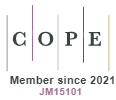Low enthalpy heat sources available for vertical ground heat exchangers. Environental and technical considerations
DOI:
https://doi.org/10.18778/1427-9711.13.04Keywords:
geothermal heat pumps (GHP), ground-water conditions for GHP, low enthalpy energyAbstract
Utilization of low enthalpy heat from the subsurface parts of the earth is one of the way of geothermal energy management. Heat pumps offer the possibility to obtain low enthalpy heat. Geothermal heat pumps (GHP) with vertical ground heat exchangers are beneficial because of the economical efficiency and small impact on the environment. Moreover they are one of the renewable energy sources. The article presents the most important environmental determinants: geothermal gradient, natural terrestrial heat flow, thermal conductivity of rocks and local hydrogeodynamic conditions. This paper also indicates the basic technical conditions for installation of ground source heat pumps and pays attention to the thermal properties of rocks. The status of GHP in Poland is lower compared to other European countries. One of the problems is insufficient recognition of the specific ground-water conditions for vertical ground heat exchangers which affects the economical efficiency of GHP installation.
Downloads
References
Banks D., 2008, An introduction to thermogeology, ground sources heating and cooling, Blackwell, Oxford, UK. s. 1‒296.
Google Scholar
DOI: https://doi.org/10.1002/9781444302677
Chiasson A., Ress S.J., Spitler J.D., 2000, A preliminary assessment of the effects of ground-water flow on closed-loop ground-source heat pump system, ASHRAE Transaction, 160 s.
Google Scholar
Chmura K., 1968, Przewodność cieplna skał i węgli górnośląskiego karbonu, „Górnictwo”, 26, Politechnika Śląska, Zeszyt Naukowy, 190, Gliwice, s. 3‒127.
Google Scholar
Clauser C., 1999, Thermal signatures of heat transfer processes in the Earth’s crust, Springer, Berlin, 111 s.
Google Scholar
DOI: https://doi.org/10.1007/BFb0021871
Gąsior I., Przelaskowska A., 2010, Charakterystyka parametrów termicznych skał mezopaleozoicznych z rejonu Kraków‒Dębica, „Nafta‒Gaz”, 56, s. 663‒667.
Google Scholar
Gehlin S., Hellström G., 2003, Comparison of four models for thermal response test evaluation,. ASHRAE Transactions, 109. s. 1–12.
Google Scholar
Gonet A. (red.), 2011, Metodyka identyfikacji potencjału cieplnego górotworu wraz z technologią wykonywania i eksploatacji otworowych wymienników ciepła, Wydawnictwo AGH, Kraków, 439 s.
Google Scholar
Górecki W. (red.), 2006, Atlas zasobów geotermalnych formacji mezozoicznej na Niżu Polskim, Ministerstwo Środowiska, NFOŚiGW, AGH, PIG, Kraków.
Google Scholar
Hurter S., Haenel R. (red.), 2002, Atlas of geothermal resources in Europe, Office for the Official Publications of the European Communities, Luxemburg.
Google Scholar
Kapuściński J., Rodzoch J., Rodzoch A., 2010, Geotermia niskotemperaturowa w Polsce i na świecie, Borgis, Warszawa, s. 59‒102.
Google Scholar
Kępińska B., 2006, Energia geotermalna ‒ wykorzystanie na świecie i w Europie, „Polityka Energetyczna”, 9, Zeszyt specjalny, s. 545‒555.
Google Scholar
Kępińska B., 2013, Stan wykorzystania energii geotermalnej w Europie, Technika Poszukiwań Geologicznych. Geotermia, Zrównoważony Rozwój, 2, s. 5‒23.
Google Scholar
Kjaran S.P., Elliason J, 1983, Geothermal reservoir enginnering, Lecture Notes, UNU Geothermal Training Programme.
Google Scholar
Linacre E., Geerts B., 1997, Climates and weather explained, Routledge, London, 432 s.
Google Scholar
DOI: https://doi.org/10.4324/9780203291030
Majorowicz J., 1974, Obraz pola cieplnego Ziemi w obszarze Polski, „Rocznik Polskiego Towarzystwa Geologicznego”, 44(2‒3), s. 425‒443.
Google Scholar
Ochsner K., 2007, Geothermal heat pumps. A guide to planning and installing, Earthscan London, Sterling, s. 11‒69.
Google Scholar
Rdzany Z., 2011, Wpływ energii geotermalnej na dynamikę strumieni lodowych lądolodu warty w Polsce środkowej, [w:] Zieliński A. (red.), Znane fakty – nowe interpretacje w geologii i geomorfologii, Instytut Geografii UJK w Kielcach, s. 49‒63. DOI: 11089/1146
Google Scholar
Rybach L., Sanner B., 2000, Ground-source heat pump systems; the European experience, „Geo-Heat Center Bulletin”, 21(1), s. 16‒26.
Google Scholar
Rychlicki S., Twardowski K., Trafle J., Krochmal J., 1979, Wybrane materiały do ćwiczeń laboratoryjnych z inżynierii złożowej i geofizyki wiertniczej, Skrypty uczelniane Nr 686, Akademia Górniczo-Hutnicza im. S. Staszica w Krakowie, s. 6‒98.
Google Scholar
Sanner B., Reuss M., Mands E., Müller J., 2000, Thermal Response Test ‒ Experiences in Germany, Proceedings Terrastock, s. 177‒182.
Google Scholar
Sanner B., Karytsas C., Mendrinos, Rybach L., 2003, Current status of ground source heat pumps and underground thermal energy storage in Europe, „Geothermics”, 32, s. 579‒588.
Google Scholar
DOI: https://doi.org/10.1016/S0375-6505(03)00060-9
Schmuck A., 1966, Zarys hydrometeorologii, PWN, 160 s.
Google Scholar
Śliwa T., Kotyza J., 2003, Application of existing wells as ground heat source for heat pumps in Poland, „Applied Energy”, 74(1‒2), s. 3‒8.
Google Scholar
DOI: https://doi.org/10.1016/S0306-2619(02)00125-3
Śliwa T., Gonet A., 2010, Analysis of Borehole Heat Exchangers Design in View of Stream of Heat Exchange Maximization with the Rock Mass, Proceedings World Geothermal Congress, Bali, Indonesia, 25‒29 April 2010, s. 1‒7.
Google Scholar
Śliwa T., Gonet A., 2011, Analiza efektywności wymiany ciepła w wymiennikach otworowych różnej konstrukcji, „Wiertnictwo Nafta Gaz”, 28(3), s. 555‒570.
Google Scholar
Śliwa T., Rosen M.A., 2013, Heat Transfer Effectiveness of Borehole Heat Exchangers for Various Grouts: Analysis based on Numerically Simulated Thermal Response Tests, EIC Climate Change Technology Conference, CCTC 2013, s. 1‒12.
Google Scholar
Sokołowski J., 1996, Polska Szkoła geotermalna – zasady projektowania zakładów geotermalnych, PAN CPPGSMiE, PGA.
Google Scholar
Szewczyk J., Hajto M., 2006, Strumień cieplny a temperatury wgłębne na obszarze Niżu Polskiego, [w:] Górecki W. (red.), Atlas zasobów geotermalnych formacji mezozoicznej na Niżu Polskim, Wydawnictwo Ministerstwa Środowiska, NFOŚiGW, AGH, PIG, Kraków, s. 143‒146.
Google Scholar
Szewczyk J., 2010, Geofizyczne oraz hydrogeologiczne warunki pozyskiwania energii geotermicznej w Polsce, „Przegląd Geologiczny”, 58(7), s. 566‒573.
Google Scholar
Szewczyk J., 2011, Im głębiej, tym cieplej, Państwowy Instytut Geologiczny, Zakład Hydrogeologii i Geologii Inżynierskiej www.pig.gov.pl
Google Scholar
TransGeoTherm 2014, Projekt realizowany przez Państwowy Instytut Geologiczny – Państwowy Instytut Badawczy ‒ Oddział Dolnośląski (PIG‒PIB OD) oraz saksońską służbę geologiczną – Sächsisches Landesamt für Umwelt, Landwirtschaft und Geologie (LfULG), s. 3‒30.
Google Scholar
Ungemach P., 1987, Reservoir Engineering Assessment of Low Enthalpy Geothermal Field Paris Basin, [w:] Okandan E. (red.), Geothermal Reservoir Engineering, Kluwer Academic Publishing, 332, s. 1‒27.
Google Scholar
DOI: https://doi.org/10.1007/978-94-009-3691-1_17
Witte H.J.L., van Gelder G., Spitler J.D., 2002, In-Situ Thermal Conductivity Testing: A Dutch Perspective, ASHRAE Transactions, 108(1), s. 1‒21.
Google Scholar
Downloads
Published
How to Cite
Issue
Section
License

This work is licensed under a Creative Commons Attribution-NonCommercial-NoDerivatives 4.0 International License.










